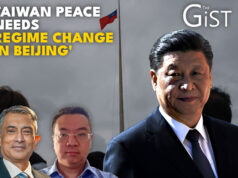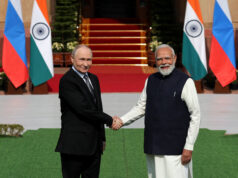A growing pro-monarchy movement in Nepal is gaining momentum, rooted in widespread public disillusionment with the country’s political leadership, says veteran journalist and editor Yubaraj Ghimire.
Although the monarchy was abolished in 2008, Ghimire believes the undercurrent of royalist sentiment never fully disappeared. “Many people, even back in 20J06, felt the monarchy should not be entirely erased due to historical, cultural, and political reasons,” he said. “But fear and political radicalism silenced that sentiment.”
In the years since, successive governments have failed to deliver on promises of justice, development, and good governance. Rampant corruption, weak institutions, and political instability have only deepened public frustration. “Democracy has been practiced in a deliberately distorted way,” Ghimire noted, pointing to a culture of “policy corruption” where decisions made in cabinet are shielded from investigation.
The tipping point appears to have come with a February 18 appeal by former King Gyanendra, who lamented the country’s deteriorating state and called for public support. The appeal, though couched in general terms, sparked a groundswell of support—especially among youth. “Many of these young people were too young to remember the monarchy but are now questioning whether the current system can secure their future,” Ghimire observed.
Large rallies followed, culminating in a violent crackdown by security forces on March 28, further fuelling public anger. The Rashtriya Prajatantra Party, which holds 13 parliamentary seats, is the most vocal pro-monarchy political force, but the broader movement includes many outside formal party structures.
Ghimire argues that rather than suppress dissent, Nepal’s leadership should initiate dialogue. “The only way forward is to listen to what people are saying—even if that includes calls for restoring the monarchy,” he said. “Nepal has rewritten its constitution seven times. Legal change is possible. What’s lacking is political will and consensus.”
As questions about democracy, secularism, and governance swirl, the monarchy is re-emerging—not just as a nostalgic institution, but as a symbol of stability for a nation in search of direction. To understand the issues involved and also get a clearer picture of India’s dilemma, watch the full interview.
In a career spanning three decades and counting, Ramananda (Ram to his friends) has been the foreign editor of The Telegraph, Outlook Magazine and the New Indian Express. He helped set up rediff.com’s editorial operations in San Jose and New York, helmed sify.com, and was the founder editor of India.com.
His work has featured in national and international publications like the Al Jazeera Centre for Studies, Global Times and Ashahi Shimbun. But his one constant over all these years, he says, has been the attempt to understand rising India’s place in the world.
He can rustle up a mean salad, his oil-less pepper chicken is to die for, and all it takes is some beer and rhythm and blues to rock his soul.
Talk to him about foreign and strategic affairs, media, South Asia, China, and of course India.




